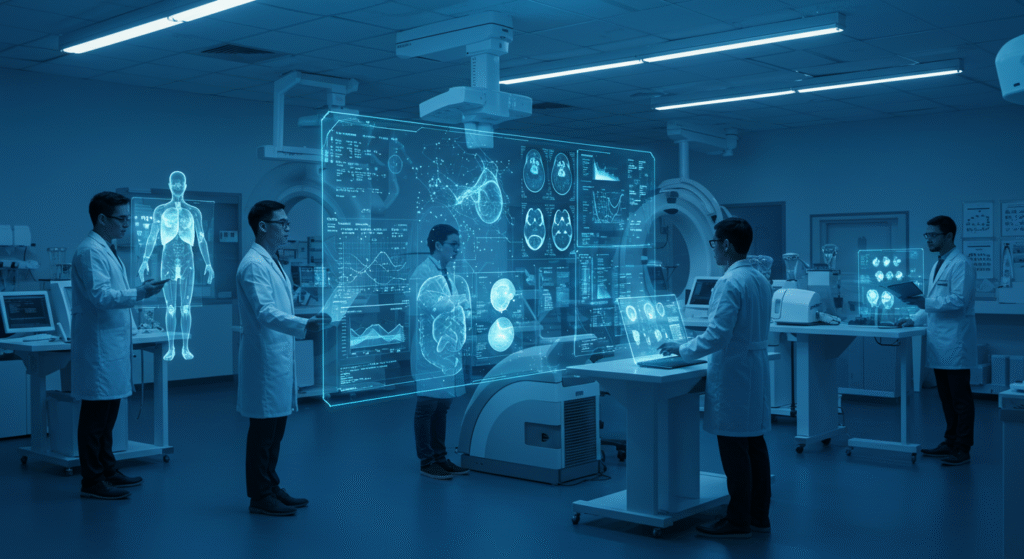In the ever-evolving world of digital technology, Diag Image stands out as a groundbreaking innovation designed to enhance the precision of diagnostic imaging and data visualization. The term “Diag Image” refers to a blend of diagnostic imaging and advanced digital processing used in fields such as healthcare, artificial intelligence, engineering, and data science. Whether applied in medical radiology, technical analysis, or AI-driven image recognition, Diag Image plays a pivotal role in improving the accuracy and clarity of complex visual data.
The adoption of Diag Imge technology has grown significantly in the past decade, thanks to its ability to process, analyze, and visualize intricate images with exceptional detail. As industries move toward automation and digital transformation, Diag Image tools have become indispensable for professionals who rely on visual data interpretation.
Understanding the Concept of Diag Image
The term Diag Imge can be broken down into two parts — Diag (short for diagnostics) and Image (referring to visual representation). Together, they signify the process of using advanced imaging techniques for diagnostic purposes.
In simple terms, Diag Image involves capturing, enhancing, and interpreting images to extract meaningful insights. For instance, in the medical field, Diag Iage technologies are used to identify diseases, monitor organ function, and support surgeons during complex procedures. In engineering or manufacturing, they help detect defects, monitor machinery, and ensure product quality through high-resolution visual analysis.
The Core Components of Diag Image Technology
The Diag Image system comprises several integral components that work together to ensure high-quality diagnostic output. These include:
| Component | Function | Application Area |
|---|---|---|
| Image Capture Devices | Capture real-time images or data for analysis. | Medical scanners, cameras, sensors. |
| Processing Software | Enhances and interprets raw image data. | AI-based image processing, CAD tools. |
| Analytical Algorithms | Detects patterns, shapes, and irregularities. | Machine learning and computer vision. |
| Visualization Tools | Converts processed data into readable visuals. | Dashboards, 3D visual models, reports. |
These components work seamlessly to ensure that every image analyzed through Diag Imge systems is not only accurate but also easy to interpret for better decision-making.
Applications of Diag Image Across Industries
1. Healthcare and Medical Imaging
In healthcare, Diag Image technology has redefined how medical professionals detect and diagnose diseases. From X-rays and MRIs to 3D CT scans, Diag Imge solutions use AI-powered image analysis to identify abnormalities faster and with higher precision.
For instance, radiologists can now rely on Diag Imge software to detect early signs of cancer, cardiovascular diseases, and neurological disorders, often before symptoms appear. This early detection capability makes treatment more effective and life-saving.
2. Engineering and Manufacturing
In industrial applications, Diag Image tools help engineers analyze material integrity, monitor production lines, and detect defects in machinery. By visualizing complex components, engineers can predict system failures before they occur.
For example, in automotive manufacturing, Diag Imge systems use thermal and 3D scanning to inspect parts, ensuring the highest safety standards.
3. Artificial Intelligence and Machine Learning
Artificial intelligence has expanded the potential of Diag Imae through deep learning and neural networks. These systems can automatically recognize patterns within massive datasets, such as identifying tumors in medical scans or detecting road signs in autonomous vehicles.
Diag Image is not just a static technology but a dynamic part of AI ecosystems that continuously learn and improve through feedback loops.
4. Environmental and Geospatial Analysis
Environmental scientists use Diag Imge tools to analyze satellite images, monitor deforestation, study weather patterns, and assess natural disaster impacts. The clarity and precision provided by Diag Image algorithms make environmental monitoring faster and more reliable.
Benefits of Implementing Diag Image Technology
The advantages of Diag Iage extend across multiple dimensions, offering practical benefits to organizations and professionals:
| Benefit | Description |
|---|---|
| High Accuracy | Provides detailed and precise image analysis, reducing human error. |
| Time Efficiency | Automated image recognition speeds up diagnostic processes. |
| Cost Reduction | Minimizes manual labor and repeat diagnostics. |
| Enhanced Visualization | Converts complex data into easy-to-understand visuals. |
| Cross-Industry Usability | Applicable in medicine, engineering, AI, and environmental sciences. |
These benefits make Diag Image one of the most valuable tools in today’s data-driven industries.
The Role of AI in Diag Image Advancement
Artificial intelligence plays a central role in modern Diag Imge systems. AI algorithms are designed to learn from large sets of image data, enabling them to detect patterns that humans might overlook. Deep learning models can analyze thousands of images per second, helping professionals make faster and more accurate decisions.
For example, in medical diagnostics, AI-enhanced Diag Imge platforms can identify micro-level tissue changes in scans, significantly improving the detection of early-stage diseases. Similarly, in industrial automation, these systems can continuously monitor visual data streams to ensure consistent quality control.
Challenges Faced by Diag Image Systems
Despite their many benefits, Diag Iage technologies face certain challenges:
-
Data Privacy Concerns – Especially in healthcare, image data often contains sensitive information that must be protected.
-
Cost of Implementation – Advanced Diag Iage systems can be expensive to deploy and maintain.
-
Technical Complexity – Requires skilled professionals to interpret results and maintain system accuracy.
-
Integration Issues – Compatibility between old and new imaging systems can cause workflow disruptions.
While these challenges exist, ongoing advancements in AI, cloud computing, and data security are helping to mitigate these issues.
Future of Diag Image Technology
The future of Diag Image looks promising, driven by innovations in AI, quantum computing, and 3D visualization. Future systems will not only analyze images but also predict outcomes and suggest solutions. For instance, predictive diagnostics could alert doctors to potential health issues before they manifest, while in manufacturing, Diag Imge tools might predict machinery failures days in advance.
In the coming years, we can expect Diag Iage systems to become more automated, affordable, and accessible, benefiting industries of all sizes. Cloud-based platforms will also enable global collaboration, allowing professionals to share and analyze images securely from anywhere in the world.
Conclusion
In conclusion, Diag Image represents the fusion of diagnostic precision and digital intelligence. Its influence spans across healthcare, engineering, environmental science, and AI — reshaping how we perceive and interpret visual data. By combining cutting-edge technology with human expertise, Diag Imge ensures accuracy, efficiency, and reliability in decision-making processes.
As the world becomes more data-centric, the role of Diag Iage will only continue to grow. Its impact on diagnostics and visualization will pave the way for smarter, faster, and more informed innovations that define the future of digital diagnostics.






